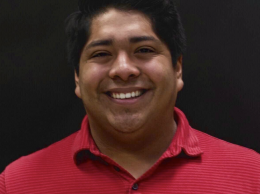Panel tackles startup funding
There’s less venture capital to start technology businesses, and most of it is being crammed into existing firms rather than raw startups.
But for new entrepreneurs who have a viable product in a large market with the team that can make it happen, there are as many opportunities as ever to get started and get funded – whether through traditional venture capital firms from Silicon Valley, new forms of private equity or angel investors.
That was the takeaway from “Raising Venture Capital: Some of the Important Rules Have Changed!” The event was hosted at UC Santa Barbara by the Central Coast MIT Enterprise Forum and the university’s Technology Management Program and drew about 120 attendees.
Since the early 1980s, venture capital has funded technology booms in the United States. Limited partners contribute to funds run by general partners, who invest in companies and then try to sell them to bigger firms or cash out in initial public offerings of stock to generate returns for the limited partners.
But traditional venture capital is dwindling to its lowest point in a decade, said Randy Churchill, director of emerging company services for PricewaterhouseCoopers. Clean tech, medical devices and software the mainstays for venture investors, but the money is increasingly being piled into later-stage companies. That’s mostly because there are fewer limited partners with cash to put into the front end of the pipeline, and fewer exits such as IPOs.
“There hasn’t been a lot of activity on the back end of the pipeline. There’s a little bit of a backlog,” Churchill said.
While that wouldn’t seem to bode well for the brand new entrepreneur, it’s not as bad as one might think, said Keval Desai, a UCSB graduate who went on to work for Google and is now a venture investor at InterWest Partners in Silicon Valley. That’s mainly because the costs of starting a company have come down – software firms can rent out servers by the hour rather than spending huge amounts of cash to build data centers.
“Moore’s Law has come to entrepreneurship,” Desai said.
He also said that despite low levels of venture capital being raised, there’s still seven times the amount of money available than when he graduated from UCSB in the early 1990s. “If you’re thinking of starting something, now is a great time to do it,” he said.
That is in part because there are seven billion people on earth and only two billion are on the Internet. While Facebook’s 800 million users looks staggering today, there’s room for competition tomorrow. “It’s only 10 percent of the market – there’ still 90 percent left. If you want to start a social network, come talk to me,” he said.
While he concedes that many tech IPOs this year have failed to hold value, Desai dismissed the idea that those data points are a clear indicator of a tech bubble. “There seems to be a bubble in innovation and entrepreneurship, which is a good thing. Is there a bubble in valuations? I think that story is unfolding now. I would be hard pressed to say there’s a bubble.”
As venture capital becomes scarcer, a new asset class is emerging – value investments. Foundations and nonprofits have a lot of money to invest and haven’t been enamored of the markets in the past few years. It’s a new potential source of funding for socially oriented businesses.
“If they can make an investments that fit with their cause and just get their capital back – not even get a return – it’s a huge opportunity for them,” Lance Helfert, co-founder and president of West Coast Asset Management, said of impact investing. “It’s here. It’s big.”
And then there is one of the oldest sources of funding – angel investors. Those are often older, savvier businesspeople with money they don’t mind losing on younger entrepreneurs. They are often just as interested in mentoring, leaving a legacy and karmic returns as they are in financial returns. To demonstrate the idea, Mike Panesis, president of the Westlake Village and Santa Barbara chapter of the Tech Coast Angles, flashed a classical painting of one of the best-known historical acts of angel investing.
“This is Christopher Columbus making his pitch to Queen Isabella,” Panesis told the audience. “I don’t know what his term sheet looked like, but he closed the deal.”











